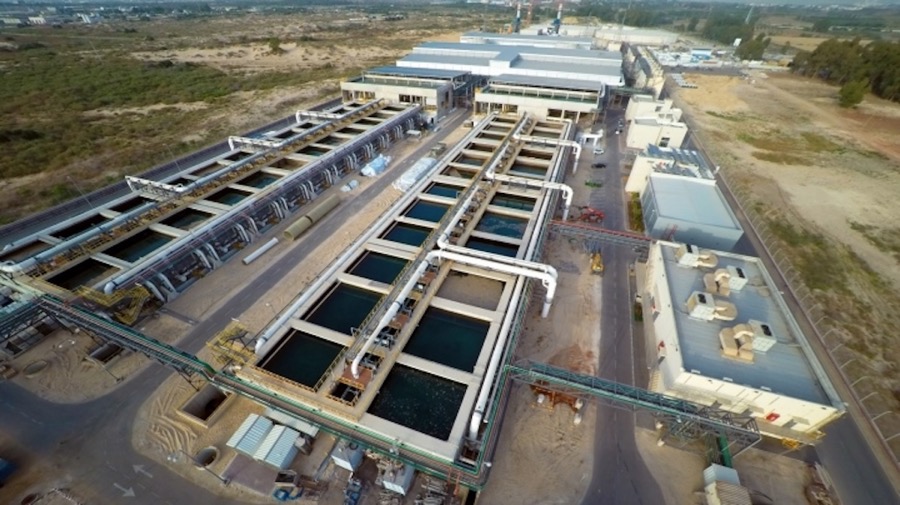High-salinity wastewater is one of the major challenges in wastewater treatment today, especially in coastal areas and in many industries such as seafood processing, salt production, and oil & gas extraction. With total dissolved solids (TDS) content exceeding 3.5%, this type of wastewater not only poses difficulties for treatment but also carries significant risks to the environment and infrastructure. This article will explore in detail what high-salinity wastewater is and the most suitable treatment technologies.
High-salinity wastewater is a type of wastewater containing a high level of dissolved salts (TDS), typically exceeding 3.5‰, equivalent to the salinity of seawater. The main salt components include compounds such as NaCl, MgCl₂, CaCl₂, and KCl, which make the physicochemical properties of this wastewater different from those of conventional wastewater. High salt content not only affects the treatment process but also impacts the corrosiveness and stability of treatment systems.
Sources of saline wastewater are diverse, mainly from industrial sectors and production activities directly or indirectly related to salt. Typical industries include seafood processing, salt production, textile dyeing, paper manufacturing, oil & gas extraction, and chemical production. In addition, saline wastewater can also result from seawater desalination processes or from domestic and production activities in coastal areas where water sources are directly influenced by tides and saltwater intrusion.
This type of wastewater has many negative impacts on the environment and treatment systems. When discharged into freshwater environments, the high salt content can alter ecological balance, affect biodiversity, and harm aquatic organisms. During treatment, high salinity can inhibit or kill microorganisms, reducing the efficiency of traditional biological processes. Furthermore, the strong corrosiveness of saline water can damage equipment, pipelines, and infrastructure, and increase the risk of contaminating freshwater sources if not properly treated

The sources of saline wastewater are diverse, altering ecological balance and affecting the health of aquatic organisms
High-salinity wastewater is characterized by a high total dissolved solids (TDS) content, primarily consisting of inorganic salts such as NaCl, MgCl₂, CaCl₂, and KCl. This salt content not only increases the water’s electrical conductivity but also directly affects its chemical and physical properties, making the treatment process more difficult than for conventional wastewater.
In addition, this type of wastewater often has fluctuating pH levels and contains various other contaminants, complicating the treatment process, including:
Electrolysis is a method that uses direct current to separate salt ions and dissolved substances from water. This process helps remove salts, heavy metals, and certain organic compounds, and can also be integrated with disinfection. Its advantage is high treatment efficiency for various pollutants; however, its drawbacks include high energy consumption and operating costs, making it suitable mainly for small-volume wastewater or specific treatment requirements.
Reverse osmosis is a technology that uses semi-permeable membranes and high pressure to allow purified water to pass through while retaining salt ions, impurities, and microorganisms. This is currently the most effective desalination method, capable of treating both seawater and brackish water. However, to achieve optimal efficiency, wastewater requires pretreatment to reduce scaling and membrane fouling. RO has relatively high investment and operating costs, especially for water with high salt content.
Biological treatment uses halophilic (salt-tolerant) microorganisms to break down organic matter in saline wastewater. This technology is environmentally friendly, has low operating costs, and is suitable for reducing organic pollution before applying desalination technologies. However, the startup and adaptation period for the microbial community is relatively long, and its salt removal efficiency is negligible. Therefore, it is often combined with methods such as RO or electrolysis to meet discharge standards.

High-salinity wastewater treatment technologies are suitable for many businesses and investors
High-salinity wastewater treatment requires advanced and appropriate technologies to achieve optimal efficiency. Each method—electrolysis, reverse osmosis, or biological treatment—has its own advantages and limitations, and should be selected based on the characteristics of the water source and treatment goals.
If your business is seeking a safe – effective – sustainable solution for saline wastewater treatment, contact Đại Nam today for a free consultation and on-site survey.